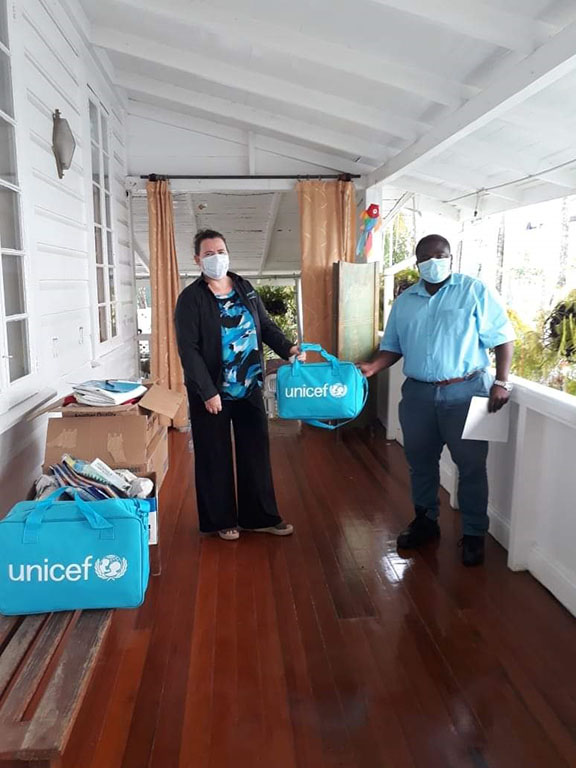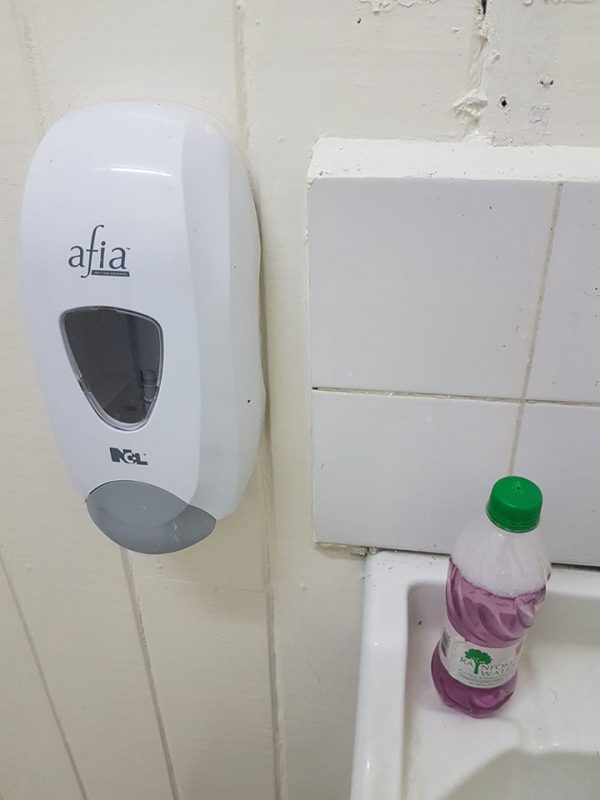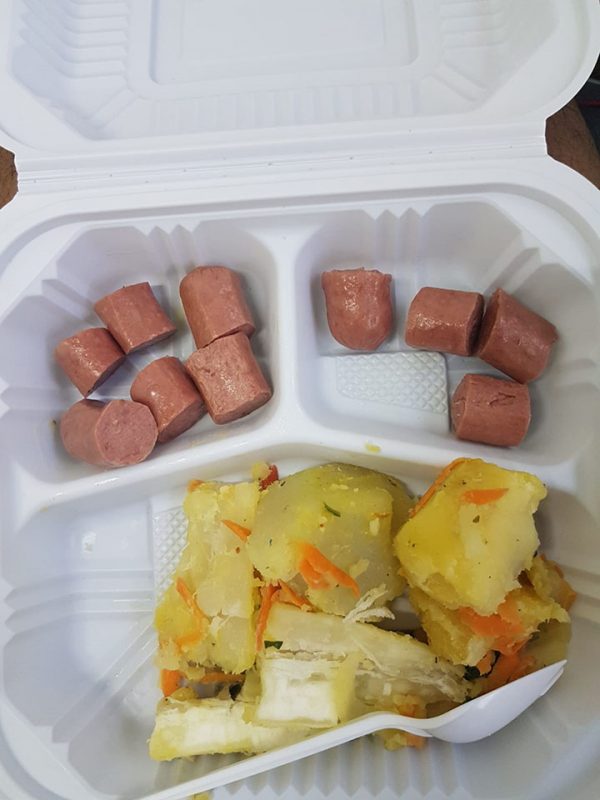Forced to endure cramped quarters, shortages in hygiene products and the repeated disruption of their water supply, some patients housed at the government-run COVID-19 isolation unit at Diamond fear that the poor conditions are inhibiting their speedy recovery.
“I initially chose to refrain from a public airing of the conditions here. As I have explained to others, public awareness of the situation here may deter others from testing if they fear coming and experiencing these conditions and this would have major implications for efforts to stem the spread of COVID-19 in Guyana,” a patient writes in a letter published in today’s Sunday Stabroek.
In the letter, the patient details the many trials they have had to endure since being admitted to the facility after testing positive for COVID-19.
For weeks, the patient says, they had been pleading for improved conditions but little has changed, save for an intervention by UNICEF, which made a donation of some items last week. However, the patient argues that the situation has moved from “tolerable to dire” with the admission of more persons, including children.
The patient also notes that the importance of social distancing is continually emphasised due to the high risk of cross contamination or reinfection but being forced to share some of the amenities puts all the patients at risk.
According to the patient, based on the number of persons at the facility at any one time, some have to sleep two persons to a room which, at most, measures 12 feet by 10 feet. “The situation now is that some rooms have two patients inside with beds three feet apart while others have one person inside. However, this would change as more persons are admitted. In such close confines, we are advised to leave the room only when necessary, to get food and go to the toilets and shower. On most days, the rooms get very hot during the day, notwithstanding the ceiling fan, and as everyone by now knows, the minimum distance advised to keep apart is six feet which is all but impossible in such a cramped space,” he notes.
Additionally, the patient notes that the blocks for the male section are set up so that 12 persons have to share two toilets and a shower.
Further, the patient says hygiene practices for a typical day involve spraying the doorknobs of the room, shower and toilets, the toilet handles and seat, the knob for the shower, the taps, the chairs and any place that we lean when we go to the verandah for fresh air, with sanitising liquid. “That rapidly diminishes the supplies sent by families and though we have pleaded with the medical teams here for more, only a very limited amount is provided from time to time,” the patient points out.
The patient also highlighted the unstable water supply, while noting that over the past three weeks, for at least five days at different periods, there was no running water in the upper flat. The latest occurrence was from the afternoon of May 13 to the afternoon of May 14. “It has been drilled into the population to wash our hands, and enhance hygienic practices to combat the spread of the virus. In all matters hygienic, water is a main component. How then are the persons here expected to practice good hygiene when sometimes there is no water? The situation is such that once I woke at 3am to shower and we keep the single bucket made available filled with water just in case,” the patient laments.
The patient also says they are expected to use one mask for two days and are advised to sleep with a mask on, particularly those who share a room. The patient says even some medical personnel have to reuse their masks.
Additionally, the patient says safety is also a huge concern since locks on some doors are not working and notes that someone recently stole a phone but the police refused to come in. With the number of children present now, the patient says safety is critical.
Diminishing trust
The patient notes that after their first 14 days at the facility, they have to be tested again but the results sometimes takes days to return. “One person tested negative in one week and did the second test (two negative tests results are required for discharge) the following day so that he could be cleared to go home but only got the results six days later and it was positive. Another man did not get any results at all but was asked to do another test and days after is still to get the results. Some people tested negative and then positive. And these are not isolated incidents. It leaves people questioning the system and diminishes their trust in it. It also begs the question as to whether reinfection is occurring and at what scale. Given the conditions here, that is not implausible,” the patient says, while adding that many persons take longer than two weeks to recover and at least one person has been at the facility for over two months due to repeated positive tests.
The patient has also taken issue with claims being made about the amenities at quarantine and isolation facilities, such as free internet access, television and access to support services, and says that misrepresenting the true situation undermines the trust needed to fight the spread of the virus. “Further, many persons have said that when told that they would have to come to the isolation unit here, assurances were made regarding the care and facilities available. However, the reality is different,” the patient writes.
“People willingly came here. But many have since said that when they are released, they would warn everyone about the conditions here and that if anyone shows symptoms that they should not get tested,” the patient further says, before also pointing out that some have said that even if their relatives showed symptoms, they would advise them not to get tested and instead to try home remedies.
“As much as the doctors work hard, the facility here is not conducive to rapid recovery. After the worst symptoms passed, I felt better at home but here some symptoms have returned. We are pleading with the authorities for improvements in the areas mentioned above. We understand, maybe more than most, the risks of COVID-19 and should these improvements be made, I would be the first to trumpet it and also educate people as the overall communication on the pandemic has been poor,” the patient adds.





